The Weekly Anthropocene, February 8 2023
Dispatches Against Despair, from the Wild, Weird World of Humanity and its Biosphere!
Wildlife
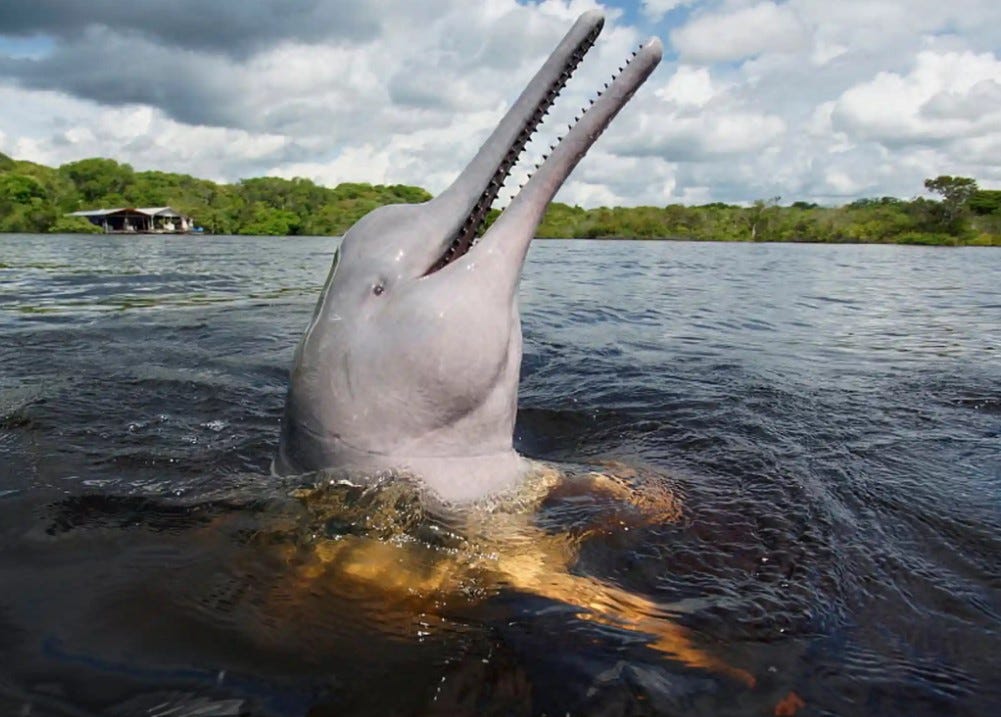
On the Laguna Nare in the Guaviare region of Colombia, local villages and former guerrillas have created a peaceful ecotourism industry around the charismatic local Amazon river dolphins (Inia geoffrensis, also known as pink dolphins, botos, and inias, an endangered species). This generates good jobs for nearby villages, earning locals substantially more money than fishing in the lake (which had previously caused conflict with the fish-eating dolphins). This project is particularly interesting because it’s in an area that was on the front lines of Colombia’s 50-year-long civil war against the FARC militia. Since the Colombia-FARC peace accords of 2016, many FARC guerrillas (who often hid out in the rainforest for long periods, accumulating expert knowledge of local species and conditions) have pivoted to ecotourism and conservation science. One nearby ex-guerrilla-led ecotourism business is already bringing new visitors to the dolphins of Laguna Nare. This is a pretty awesome Anthropocene win-win-win: conserving an endangered species, creating jobs, and helping solidify a peace process. Great news!
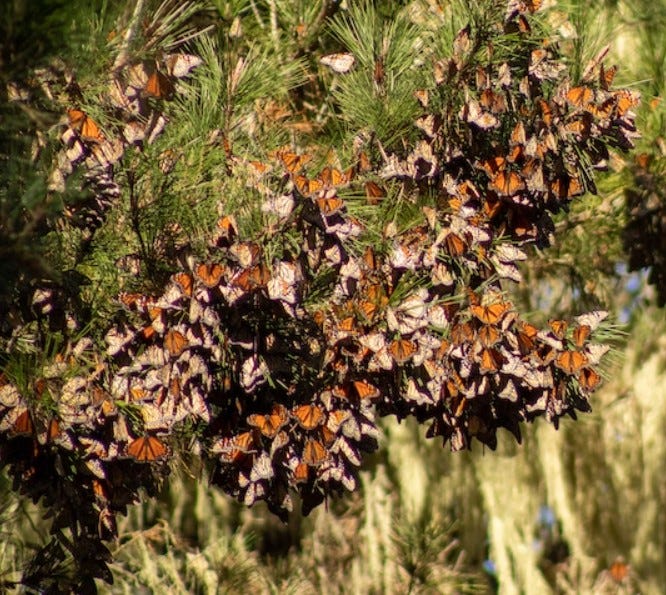
335,000 monarch butterflies (Danaus plexippus) were recorded across their California and Arizona overwintering sites during the 26th Western Monarch Count, held in November and December 2022. That’s the highest tally since the year 2000, and is good news after a perplexing few years for endangered monarch populations. In 2020 the Western Monarch Count found a record low of less than 2,000 monarchs, sparking alarm for the future of the species, but that zoomed back up to over 200,000 in 2021, for unknown reasons. (For context, that’s still much less than the 1.2 million monarchs recorded in 1997 and the historic norm of multiple millions.) 2022 could have gone either way: there’s a lot that can kill a butterfly, from storms to pesticide use to cutting down key groves to climate change making the milkweed they eat produce more toxins. However, it seems like the monarchs have done relatively well this year!
And that’s just the western migration of monarchs (which have fascinating multi-generational migration cycles). Many butterflies from the eastern migration, which normally breed in the Midwest and overwinter in Mexico (not California), appear to be developing an “alternative life history strategy” and spending the entire year in Florida instead. This iconic butterfly seems to be hanging on for the moment in the chaotic, wild world of Anthropocene North America; here’s hoping it receives more human support and continues to grace the skies!
The Miskito indigenous people of the village of Mabita in northeastern Honduras have started a program of feeding and building nest boxes for local scarlet macaws (Ara macao). They also protect them from poachers: many villagers previously were poachers but have since switched to supporting and recording data on scarlet macaws for science, supported for a while by funds from the U.S. Fish and Wildlife Service among others. The local macaw population has grown from approximately 500 to 800 since the project began in the 2010s. Another great proactive, community-supported conservation initiative in the Anthropocene!
The Renewables Revolution
America’s Inflation Reduction Act, with its nearly $400 billion in clean energy spending, is spurring a virtuous cycle of further government investment in the renewables revolution around the world. The European Union has now officially proposed a $270 billion USD (about 250 billion euros) Green Deal Industrial Plan! Notably, in addition to directly supporting renewables companies like in America, the nascent “GDIP” includes provisions to simplify the regulatory environment for renewables projects to allow them to get built faster (which the US has still not succeeded in doing, causing considerable delay). The EU’s 27 member states will now debate whether to approve this. (Here’s the official EU announcement, with more details.) Spectacular news!
“Last year, we doubled the additional deployment of renewable energy. And for the very first time, we generated more electricity from renewables than from gas…You know now that we have completely got rid of our dependency on Russian fossil fuels. It went much faster than we expected…So we have the possibility to redirect or reorient the additional funding of REPowerEU – it is about EUR 250 billion – to our net-zero industries.”
-Ursula von der Leyen, President of the European Commission
India announced that it would invest $4.25 billion in further clean energy projects, including subsidizing grid-scale battery storage, building solar farms in the Himalayan state of Ladakh and transmission lines to link them to the national grid, and endeavoring to turbocharge an Indian “green hydrogen” sector, using renewable electricity to power electrolysers that create the storable, burnable fuel from water.
A landmark new report has found that for 99% of existing coal plants in the United States, it would be cheaper to replace them with wind or solar. (This number has risen from 70% in 2019 to 99% today, in large part due to the Inflation Reduction Act!). That’s not just “cheaper to use wind and solar if we already had that instead,” that’s “cheaper to shut down the coal plant and build a brand new wind or solar farm from scratch than to keep paying for coal to burn!” Of the 210 coal plants in the continental US, only one (located right next to a coal mine in Wyoming) is cheaper than building new renewables-and it’s just 2% cheaper. And that’s not including the massive climate and public health costs of coal power: this study focuses on the direct operating costs alone! This hyper-polluting, climate-cooking, black lung-causing dinosaur of an industry is economically doomed: it’s just a matter of time before institutional inertia is overcome by the overwhelming logic of clean energy. Great news!
A new analysis has calculated that companies have announced plans to create 100,000 new green jobs in America since the passage of the Inflation Reduction Act in August 2022, spread across over 90 new clean energy projects in 31 states!
Democrats won total control of the Minnesota legislature in the 2022 midterm elections. Now, both chambers have passed a 100% clean electricity bill, with both the Minnesota House and Senate approving a bill that will require all utilities to provide 100% carbon-free electricity by 2040. It will shortly be signed into law by Democratic Governor Tim Walz, a strong supporter. (Republican-governed North Dakota is already threatening to sue as Minnesota will stop buying ND’s coal power). Minnesota now joins 16 other states (including Maine!) in passing similar 100% clean electricity bills (see map), as well as four more with executive actions only (WI, MI, LA, and NJ), and one (Nebraska) where all utility boards have voted in such a commitment. Great news!
Antarctica
A fascinatingly inventive new study used the genes of Turquet’s octopuses1 (Pareledone turqueti) to conclude that the West Antarctic Ice Sheet had likely completely collapsed during the Eemian interglacial period 125,000 years ago. (Here’s the study: it’s currently available as a preprint, awaiting peer review.) The evidence for such a collapse was previously inconclusive. An interdisciplinary research team, thinking well outside the box, tested genomes from widely separated populations to find that octopuses in the Ross Sea and Weddell Sea were surprisingly closely related-even more similar to each other than to the populations in places like the Antarctic Peninsula, which is between them on the present-day Antarctic coastline. This only makes sense if there was a seaway between the two seas at some point (which would indicate that the West Antarctic Ice Sheet had melted), and the genetic timing apparently lines up with the Eemian, when temperatures were only 0.5°C-1.5°C higher than today.
This is of particular relevance to the Anthropocene because it means that a temperature shift of about the same magnitude as climate change is causing right now (you may have heard of the IPCC’s famous “1.5°C warning” report) appears to be enough to eventually cause a complete West Antarctic Ice Sheet collapse. Although such a collapse would take hundreds to thousands of years, it would be quite bad, raising sea levels by a catastrophic 3 to 4 meters (about 10-13 feet), enough to flood coastal regions worldwide.
On the plus side, the way humanity’s technology has been advancing lately, there’s a decent chance we’ll be able to get climate change fully under control this century and start drawing down enough carbon to cool temperatures back to normal by the 2100s, well before a complete ice sheet collapse. Yet more incentive to speed up the renewables revolution and stabilize our climate! And we learned this from octopus DNA. A truly fascinating piece of scientific discovery.
And yes, octopuses is the correct plural, not “octopi.”




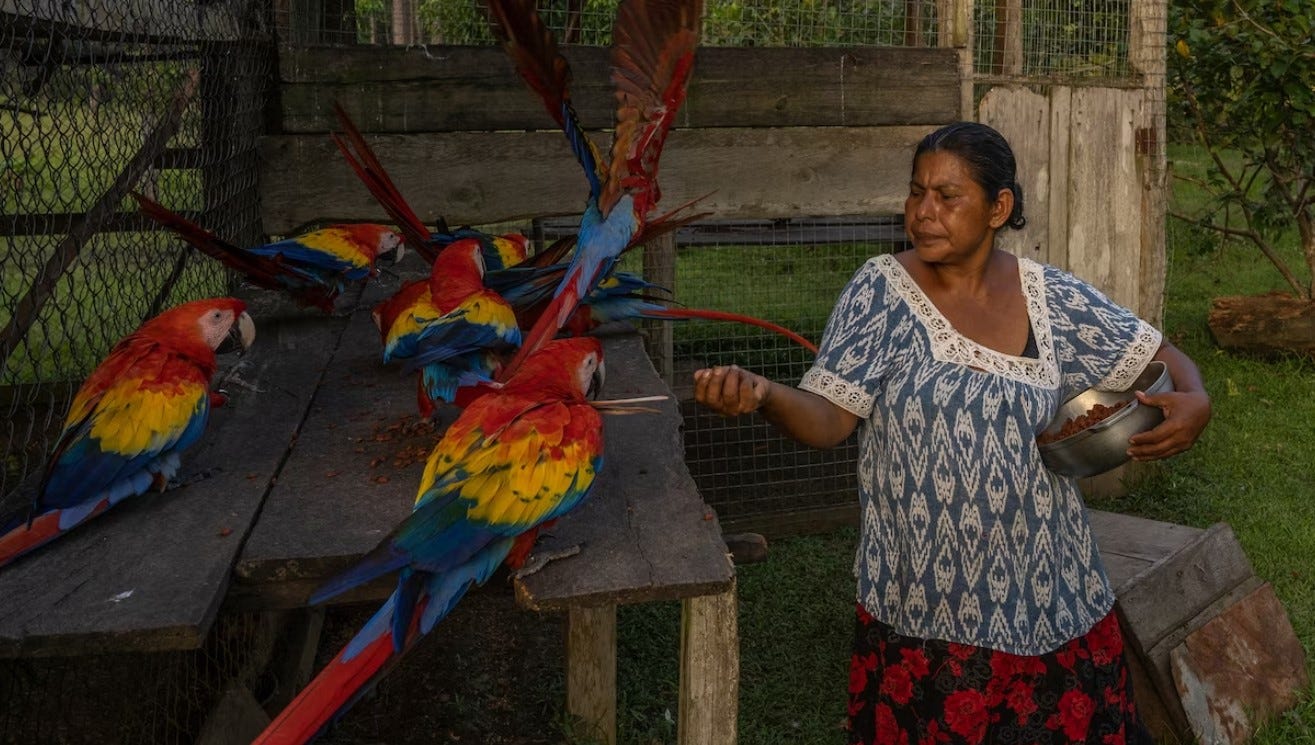
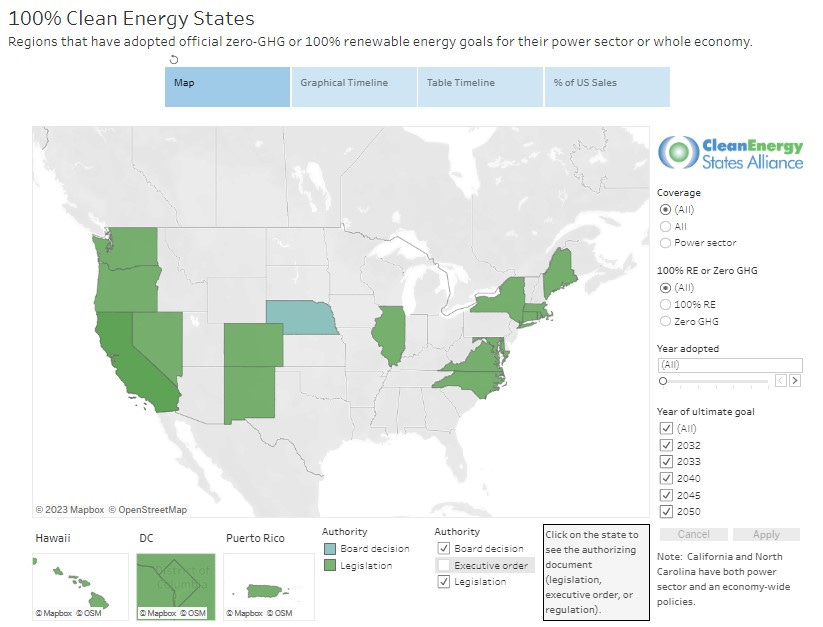
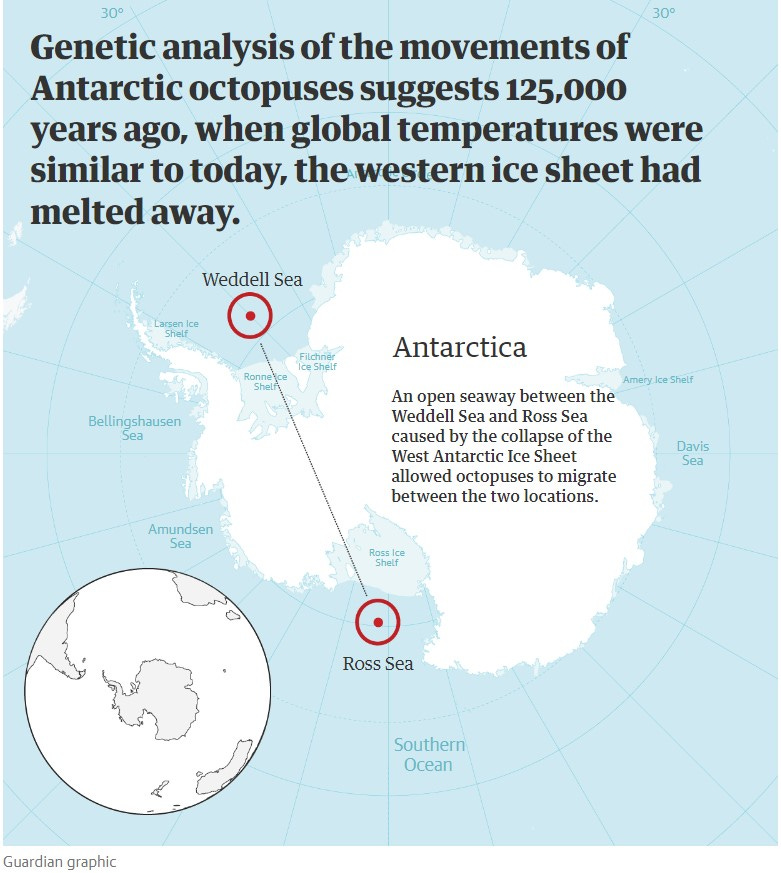
Nice switch for guerillas in Columbia. I wish every belligerant around the world had their peace of mind
Octopuses and Ice sheets...who would've guessed a connection!